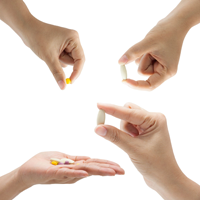There’s a strong desire in the genetics community for a set of canonical transcripts. It’s a completely understandable and reasonable thing to want since it would simplify many aspects of analysis and especially the downstream communicating and reporting of variants. Unfortunately, biology isn’t so tidy as to provide a clear answer for which transcript is the important one. Consequently, there… Read more »
Regulatory Issues Regulatory bodies such as the Federal Drug Administration (FDA) already have a full plate. In the US, FDA-regulated products account for 20 percent of each dollar spent by American consumers each year. More specifically, the work of the regulatory authorities include the following: Carefully considering benefits and risks when evaluating medical products Staying on top of rapidly advancing scientific innovations… Read more »
The Educational Challenge Precision medicine will fundamentally change how health care is practiced. Of course, we have a long way to go. For most practitioners today, their knowledge of the human genome was established many years ago. However, new therapies and diagnostic methods are pouring in on a daily basis. So, how do we make sure that the current and… Read more »
Bioinformatics Pipelines and Systems Infrastructure The genetics industry is undergoing a fundamental shift from a clinical science focus to a bioinformatics focus. Genetic services require a greater level of data analytics sophistication than is required for other laboratory testing. Currently, data generated by new tests overwhelms current information technology systems and human interpretation capabilities. This is one of the reasons… Read more »
Meta-analysis is an important tool to have in the bioinformatics toolbox. The numbers alone speak for themselves. It is the fourth most requested feature for SVS, and a simple google scholar search for 2014 and 2015 find 17,300 results for genetics + meta-analysis. There are several meta-analysis utilities out there that will take results from studies and perform the meta-analysis…. Read more »
The SNP and Variation Suite (SVS) software currently supports three methods for genomic prediction: Genomic Best Linear Unbiased Predictors (GBLUP), Bayes C and Bayes C-pi. We have discussed these methods extensively in previous blogs and webcast events. Although there are extensive applications for these methods, they are primarily used for trait selection in agricultural genetics. Each method can be used… Read more »
Tailoring diagnostic and therapeutic strategies Many have called Sir William Osler (1849-1910) the “Father of Modern Medicine”. He was one of the four founding professors of Johns Hopkins Hospital where he was instrumental in creating the first residency program for the specialty training of physicians. He brought medical students from the classroom to the bedside for clinical training. He shared… Read more »
Our VarSeq as a Clinical Platform webcast last week highlighted some recent updates in VarSeq that support gene panel screenings and rare variant diagnostics. The webcast generated some good questions, and I wanted to share them with you. If the questions below spark new questions or need clarification, feel free to get in touch with us at [email protected]. Question: Should… Read more »
Over 650 GenomeBrowse licenses have been registered and downloaded since the beginning of 2015, and with so many people enjoying the utility of this freeware program, I wanted to showcase some advanced tips and tricks so you can get more out of GenomeBrowse! Under the Controls panel, when you’re clicked inside a data plot, there is a “Filter” tab. This… Read more »
Reimbursement and Cost – Precision Medicine Part II The promise of Precision Medicine is to leverage highly targeted therapies for the benefit of the patient. By understanding better what makes us unique and leveraging our genetic make up, we hope to improve the outcome for the individual. Now, this blog is focusing on one issue that we collectively have to… Read more »
As VarSeq has been evaluated and chosen by more and more clinical labs, I have come to respect how unique each lab’s analytical use cases are. Different labs may specialize in cancer therapy management, specific hereditary disorders, focused gene panels or whole exomes. Some may expect to spend just minutes validating the analytics and the presence or absence of well-characterized… Read more »
Precision Medicine Initiative On January 30, 2015, the Precision Medicine Initiative was announced by President Obama. Many in our field, researchers and clinicians alike, recognize that such a program would bring additional funding into our space to design, develop and implement new diagnostic tests that are aiding physicians in their practice of precision medicine. Here is what we know. Led by the National Institutes of Health (NIH),… Read more »
This week, Dr. Jeffery Moore presented a webcast on the Molecular Sciences Made Personal. The webcast delved into Dr. Moore’s attempts to transform how they teach chemistry at the University of Illinois and demonstrated how he uses VarSeq with his students to examine exome data. The following are the questions asked by the attendees. Please feel free to reach out… Read more »
In a previous blog post, I demonstrated using VarSeq to directly analyze the whole genomes of 17 supercentenarians. Since then, I have been working with the variant set from these long-lived genomes to prepare a public data track useful for annotation and filtering. Well, we just published the track last week, and I’m excited to share some of the details… Read more »
Last week we conducted a webcast on “Cancer Gene Panels”. We had some excellent questions which we answered during the webcast and a few more that we didn’t get to in the allotted time. Please find answers to those questions here: 1. Are Cancer Gene Panels just another stepping stone on the way to whole exome/genome analysis? Cancer gene panels answer… Read more »
I am constantly on the lookout for fun or interesting datasets to analyze in SVS or VarSeq and recently came across a study looking into inherited cardiac conduction disease in an extended family (Lai et al. 2013). The researchers sequenced the exomes from five family members including three affected siblings and their unaffected mother and an unaffected child of one… Read more »
It was a great trip down to Florida this year. AGBT 2015 was an exciting event with lots of great presentations. For us in this tightly-knit community it is an excellent networking opportunity to catch up with existing clients and partners, but also to make new connections. Now, it is impossible to reflect on all the great talks. We were… Read more »
Personal genome sequencing is rapidly changing the landscape of clinical genetics. With this development also comes a new set of challenges. For example, every sequenced exome presents the clinical geneticist with thousands of variants. The job at hand is to find out which one might be responsible for the person’s illness. In order to reduce the search space, clinicians use various methods… Read more »
Today, Golden Helix and Fluxion Biosciences announced a collaboration in a value-added reseller relationship. The relationship will bring the VarSeq software application to Fluxion’s global client base providing them with a method to study tumor DNA in the circulation. Fluxion is proud to offer the capability as it helps move them toward their goal of offering a complete sample-to-answer workflow for… Read more »
Our Genomic Prediction webcast in December discussed using Bayes-C pi and Genomic Best Linear Unbiased Predictors (GBLUP) to predict phenotypic traits from genotypes in order to identify the plants or animals with the best breeding potential for desirable traits. The webcast generated a lot of good questions as our webcasts generally do. I decided to begin to share these Q&A… Read more »










